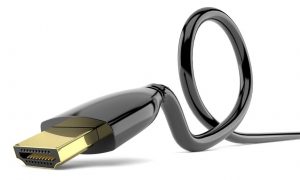HDMI stands for High-Definition Multimedia Interface, a standard for connecting high-definition devices by providing a universal connection capable of combining audio and video signals into a single interface.
The technology was developed at the beginning of the millennium and launched in 2003. The basic principle behind it is very similar to that of DVI cables, that of transmitting data between two devices, the most important difference being that DVI cables can transmit only video signals, while HDMI cables can transmit audio as well. HDMI cables link devices through the respective ports on each device. Most devices used today carry the necessary ports, but there is a solution for the ones that don’t as well: small HDMI adaptors are available for being plugged into DVI ports, making the connection of the cable possible.

A long HDMI cable is very useful in a number of situations, most notably for setting up AV systems. As the cable supports audio and video signals as well, it eliminates the need to use two separate cables (one for audio and one for video), reducing the size of entangled cable bundles in the home. The cable also enhances the quality of the signals transmitted, so the images that you will see and the sound that you will hear as the result of the transmission will be the best you can get.





